Today, one of our young Bengalese Finches born January last year has died. Aquila had been having trouble passing an egg for the last 2 days and had become quite tired. We had been helping her by giving her liquid calcium and using olive oil to lubricate her backside, but she had been unable to pass the egg to her rear. This morning we attempted to massage the egg along which stimulated Aquila to push the egg out eventually. She seemed better and had gone to sleep to rest, but later she was found pressed up against the food bowl dead. When we checked her, her breastbone was visual, and it appeared there might have been a second egg inside her. Egg binding is a common way for female birds to die. So far Florence has been egg bound twice and survived, and Aquila had been egg bound a few months ago (where the egg ruptured internally) and survived. For details on egg binding in finches, how to prevent it and help those who are egg bound, see: http://www.finchniche.com/features_eggbinding.php. R.I.P Aquila
Florence and Darwin where our original finches which we got about 2.5years ago. Most of that time they have been kept as a pair by them selves, because Zebra Finches have a tendency to be aggressive towards other species. However, seeing as our Bengalese and Cherry Finches live happily in groups we felt it was unfair to leave our Zebra Finches alone. So 4 weeks ago we bought 4 new Zebra Finches, kept them in separate pairs in quarantine and now finally introduced them to our original 2 Zebra Finches.
From information we have seen online, Zebra Finches are very territorial and should be kept either as a single pair or in multiples of at least 3 pairs. This seemed to be the case with ours as we tried shuffling them around in set lots of 4 and they started fighting almost instantly. Now all 6 are together they no longer fight. They do poke each other in another invades their private space but there has not been any chasing which is good.
This image is of the 4 new Zebra Finches. They are called Tonberry, Storm, Jelly and Von le Blonc. Tonberry is the only new Male. When we bought them, the shop keeper told us Von was a Male when we thought it was a Female. Turned out Von was Female because we have since seen her lay eggs...
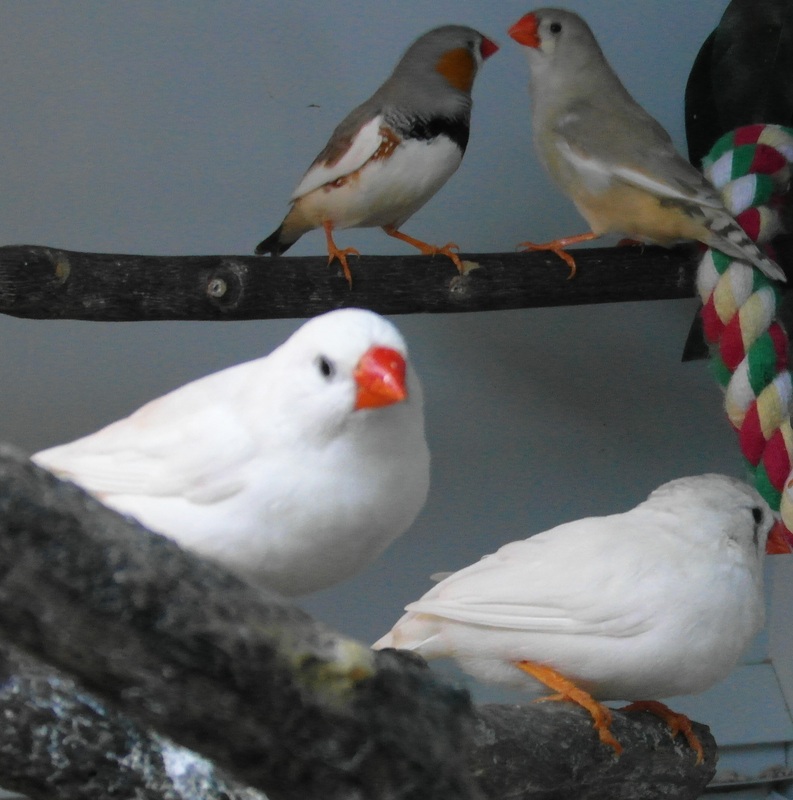
New Zebra Finches; Tonberry (Top Left), Storm (Top Right), Von le Blonc (Bottom Left) and Jelly (Bottom Right)
Plum had been unwell for about 6 weeks. She suddenly had a growth on the right side of her head which we originally thought was a sinus infection or an abscess. We had taken her to the vets straight away and she was put on a course of antibiotics, but it didn’t help. We continued to take her to the vets and she was put on two different courses of antibiotics but the growth continued to get worse.
Last week we decided to take her in for an operation to lance the growth in the hope it was an abscess but it ended up solid. A sample was taken for testing, but in the meantime while we waited for the results, the growth had gotten much worse. Originally the growth was swollen from the surgery which faded back, but the growth continued to increase.
It had gotten to the point where she had lost sight in her right eye. She couldn’t fly and had lost her depth perception. She struggled to drink and had difficulty eating. We took her back to the vets today but they said the growth was so large, they couldn’t do surgery on her without her losing to much blood. As such, we had to make the difficult decision to put her down. R.I.P Plum
Well it turned out that both of the new Crested Bengalese Finches were male, as they have both been singing, though they seem to take it in turns for who will sing on a particular day. Their songs are similar and more complex than our current Bengalese Finches. The songs are compared below: | | Apollo and his sons Theodore and Cosmos all have broadly the same song, though Theodores is slightly more complex. Comet, despite being Apollo's son as well, learnt his squeeky song from our male Cherry Finches instead (even though they have never been in the same cage once old enough to sing).
The song of our new Crested Bengalese Finches is very complex so they might get quite abit of attention from the female Bengalese Finches once we add them to the current Aviary. |
So today we went to the National Bird Show in Stafford, where there was a lot of birds, some I have never seen before such as sunbirds. We saw a lot of fancy finches but we did not see any Penguin Zebras, Pure White Bengalese or Fawn Cherries Finches. There was also lots of general goods sale stands, and there were a lot of wooden cages at amazing low prices. We managed to get a wooden cage/display cage, measuring 12” deep x 15” high x 23.5” long for only £15!
We also saw many escaped birds, one of which was an Owl Finch which we tried to catch using our newly bought net but sadly failed. I hope they rescue all escaped birds.
On a more cheerful note, we found and bought two new finches today, two Dilute Fawn Crested Bengalese Finches, oh which one appears to be male because he has been singing away happily all day since we got home.
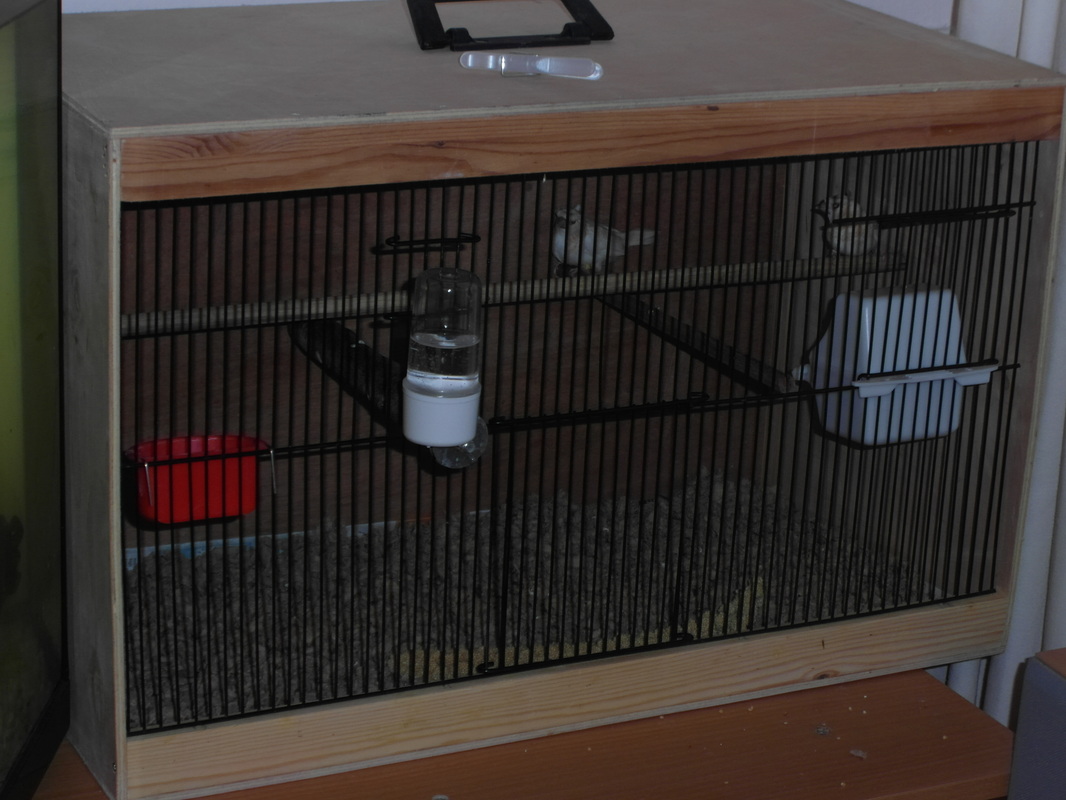
Our new wooden cage, not to bad for only £15!
|
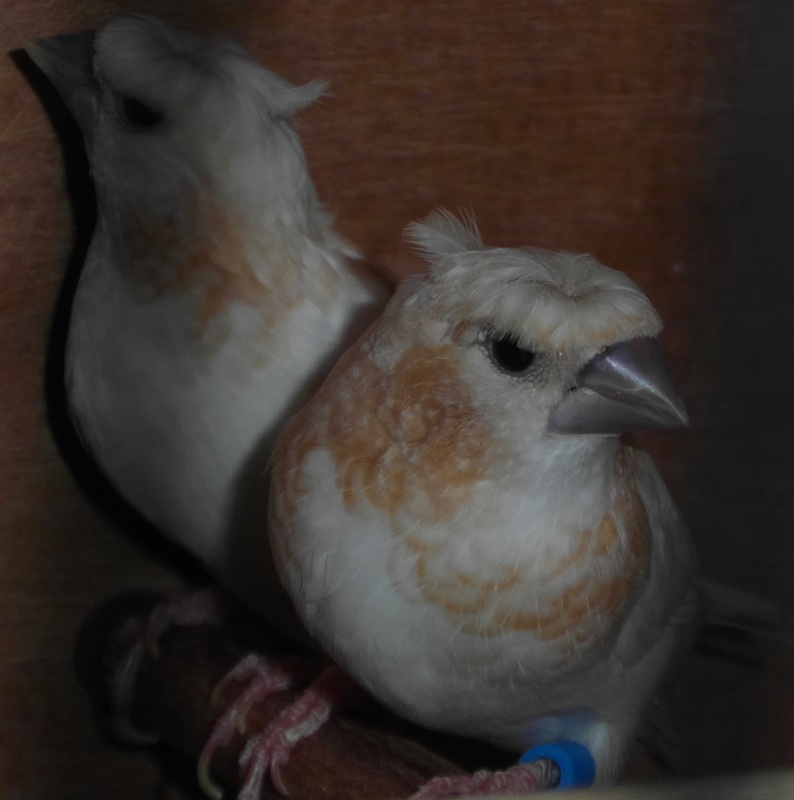
Our two new Dilute Fawn Crested Bengalese Finches
|
The other day Florence and Darwin suffered a fright in the night, when their nest fell down suddenly with them asleep in it. The birds are ok, but they are now afraid of their nest, so we have taken it out. The nest fell down because we made the mistake of hanging it up on an adhesive plastic hook attached to the metal cage, and the adhesive failed despite how light the nest and finches are.
The Fawn Cherry Finches are out of quarantine and have been put in with the other Cherry Finches. However, Plum and Orion have been moved to a medical cage, as it seems the younger males had been plucking Plum’s wing feathers. The female Fawn Cherry Finches and young male Cherry Finches are getting on well. Petra is no longer acting dominant and instead acting shy, while Cassi has taken the stand to impress the new ladies.
The Bengalese Finches are doing well in the aviary. Two additional changes were made to the aviary:
1) Removal of the internal divider which used to hide the nests. This has opened the flight space significantly and has stopped Theodore and Peppi from being territorial of their nest;
2) Addition of another artificial fern to hang in the back right corner. This space was currently unused and the Bengalese Finches appear to enjoy sleeping on top of these at night.
Well the birds have been in the Aviary for nearly two weeks now and seem quite happy. Only a few minor changes have been made, such as putting the water feeder on the floor, as we accidently spilt it a few times reaching up to attach it to the top of the aviary. We also had to replace and thin out the wood chippings on the floor, as it had gotten to damp from spilling water and giving the birds excessive baths, and couldn’t dry out so started to smell. That happened within the first week, and there have not been any issues since.
The aviary is cleaned each weekend (which is surprisingly easy and does not take very long) and the wood chippings will be replaced every other week. We also got a short hand held snow shovel for scooping up the wood chippings.
So far, hardly anyone has shown interest in the nests, mostly sleeping on the artificial fern and the vine wrapped perch. However, one couple (Theodore and Peppi) have been interested, and have occupied the far left one. We have been checking the nest for eggs and so far retrieved five eggs in total. While we do like chicks, we don’t want Theodore and Peppi breeding, as they are related and so would end up with genetically weaker chicks.
Our two new female Fawn Cherry Finches are doing well, and will be grouped with our other Cherries in about a weeks time.
Today is a sad day, our favourite finch died this morning. For the last 4 days Celestine had been looking unwell and at first we thought it was minor. Originally we put her in the medical cage, given the heat lamp during the day and medicine in her drink. She perked up soon into the first day while we were getting the aviary ready, and as she was to live in the aviary with the Bengalese as an honouree finch, we had transferred her back with her friends. But we had to take her back out after we noticed her health had deteriorated again. Yesterday she had perked up again and was eating fine, and at night she was sleeping soundly on a perch with her head tucked over to her back. This morning, we found her dead on her back, still worm, implying we had missed her by less than 30minutes.
Celestine had always acted a bit funny ever since we got her mid April 2012, and seeing as she was picked on by other birds at the shop when we bought her, we now wonder if she had had an internal defect.
Celestine was a lovely Penguin Zebra finch. She was friendly and polite, letting over finches go first and coming over to us when we spoke to her. Celestine was very young when we got her, and was most likely only about 7 months old when R.I.P Celestine
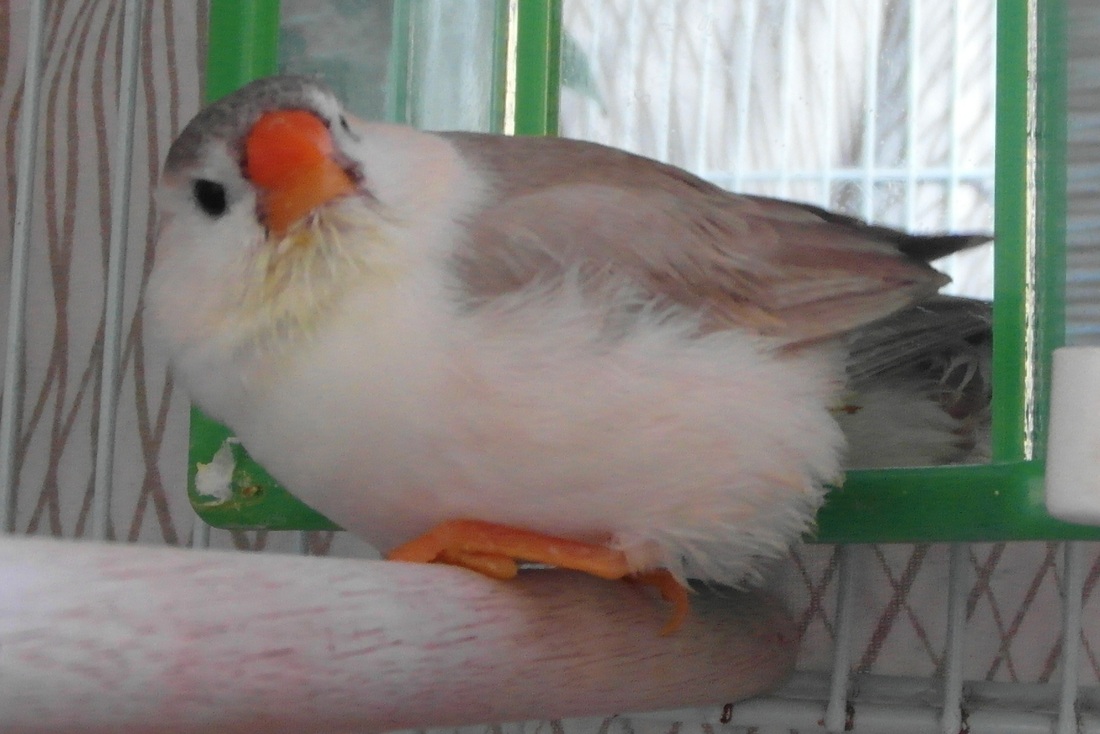
Celestine. When we first got her, she had no tail, but it grew back into a beautiful tail
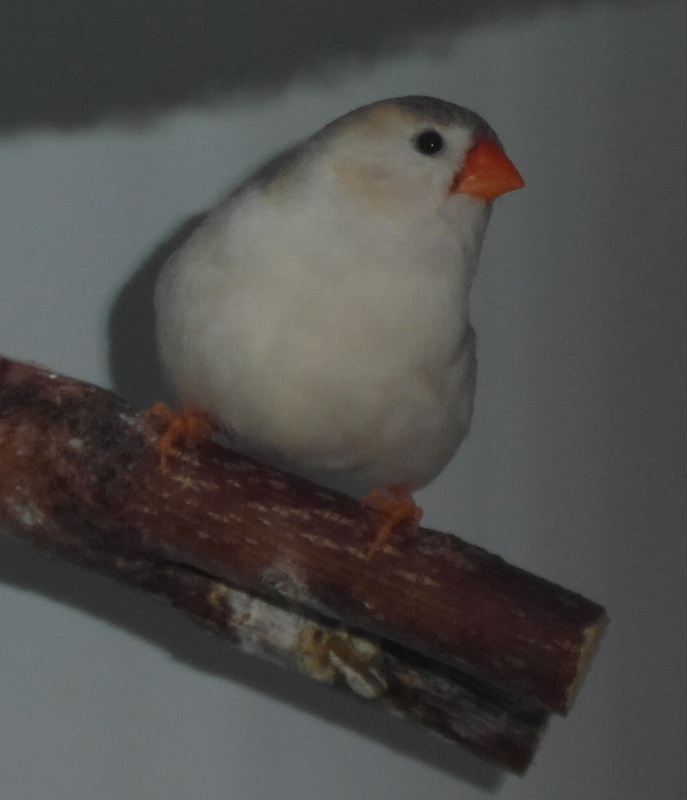
Celestine was so cute
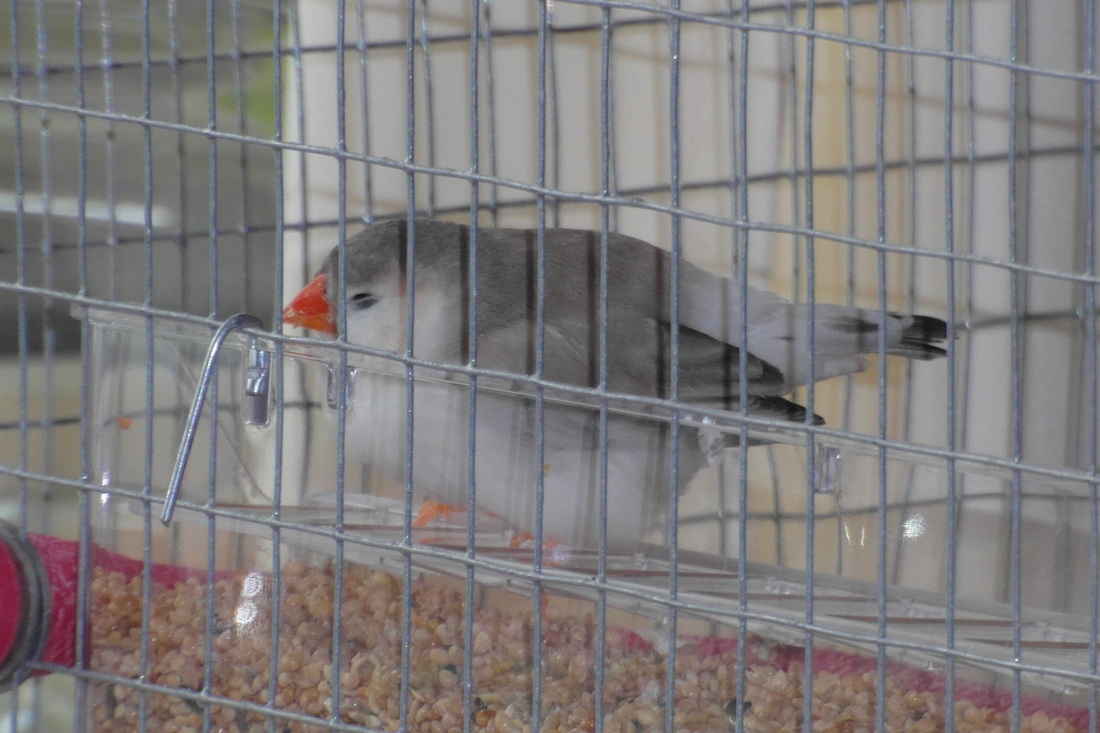
celestine eating seed
|
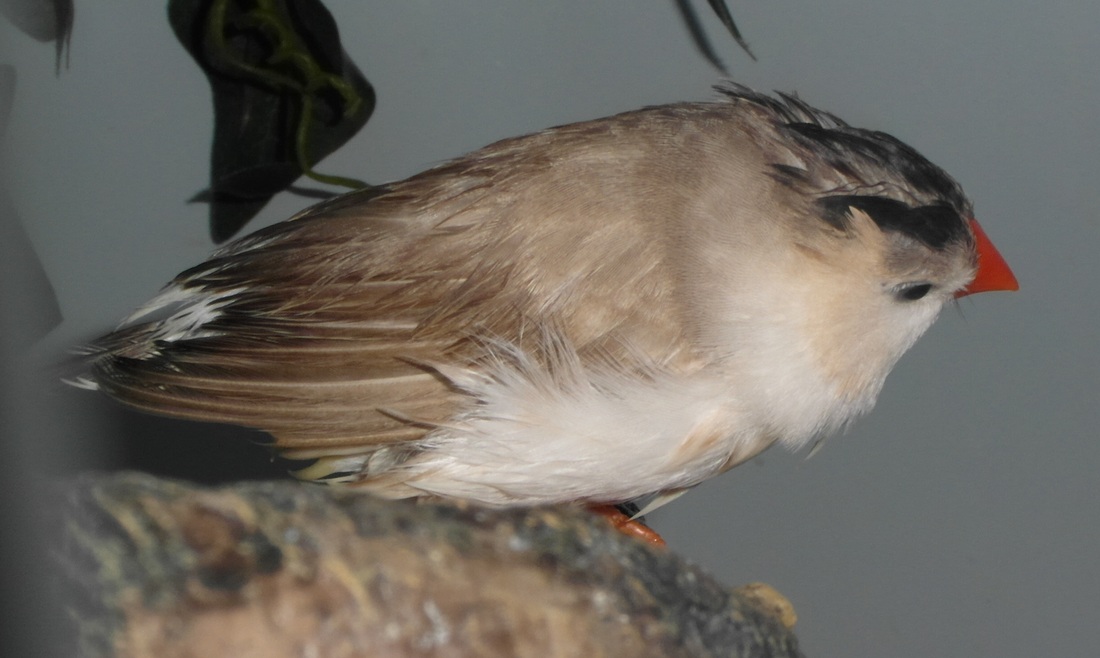
Celestine used to enjoy baths
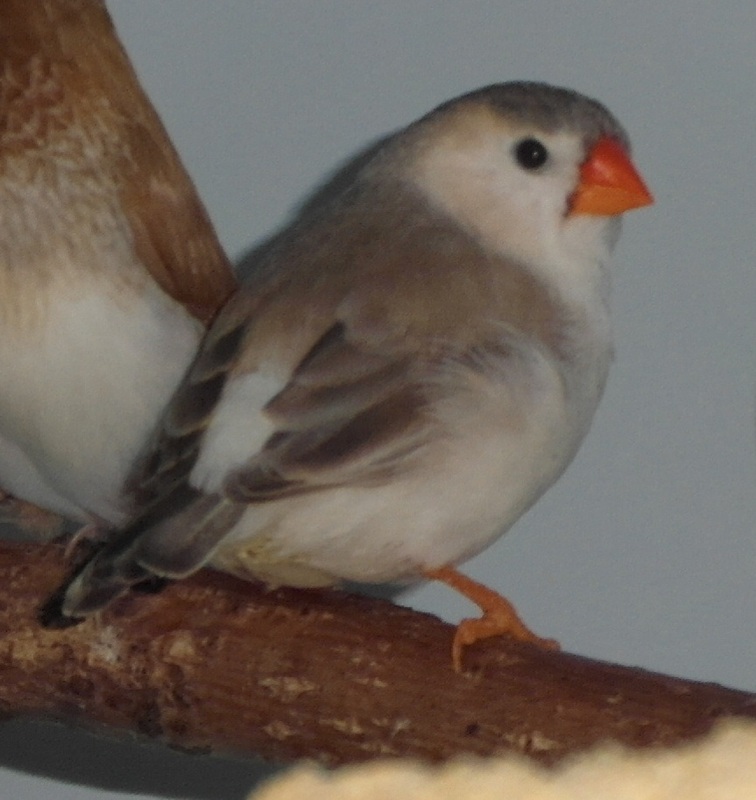
Celestine got on well with the Bengalese finches
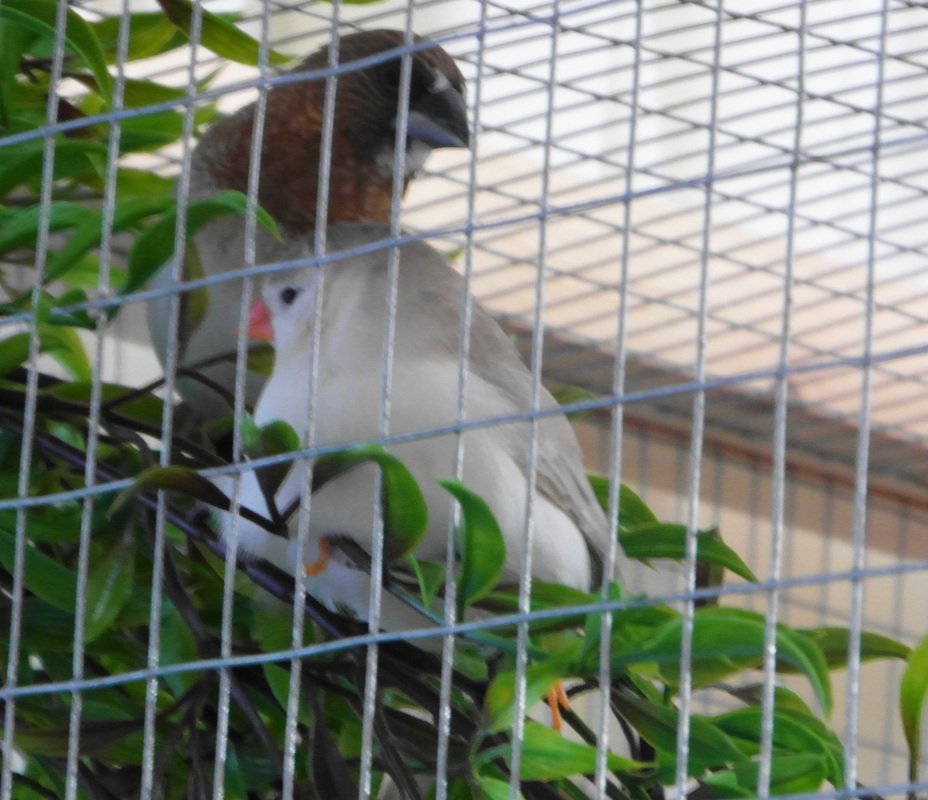
Celestine hanging out with her best friend, Aquila
|
| So this morning we kitted out the new aviary with brand new items:
1. To start, we fitted bamboo branches, one reaching the full length of the aviary at the front, and one crossing the width of the aviary on either side (of which one slots into the perch hole in the front of the middle finch nest box).
2. Next, plastic perches with slots were added to the left front corner next to the door, to allow weaker/tired finches to climb the aviary without having to do large flying runs in one go to the top.
3. Just like the previous homes, the back is lined with silk artificial foliage, but instead of fixing silk vines to perch on, an extra-long and thin one was coiled tightly round one of the bamboo perches. The silk foliage was attached by screwing in small hooks into the wooden slats, so that they can be easily removed and cleaned later.
4. Due to the mini board inside the aviary (which creates the secret sleeping zone behind it), we decided to kit the right side of it as a small play zone, with a long slim hanging ladder, a cotton spiral perch and a hanging cotton bundle.
5. Larger plastic coated hooks were attached to the roof beams to attach hanging feeders and millet sprays. While we decided to try the finches with small hanging feeders basically designed to chickens (though the feeder does have a perch round for the finches to stand on while they eat), we also put in an extra-long transparent seed trough in to allow the finches to eat from what they are more used to. It is also important to have multiple feeding stations when there are more birds, so that there is less tension and squabbling.
6. The floor was covered in bird safe wood chippings. An artificial and very bushy fern was attached to the top left corner at the front so that it flops down over some of the bamboo perches, creating a zone behind it for finches to hide if necessary. An artificial plant was also added to the bottom right corner at the back to finish it off.
The Bengalese finches and Celestine (because she had partnered up with Aquila in the flight cages) have now been moved into the aviary. Pictures updated to the Gallery.
|
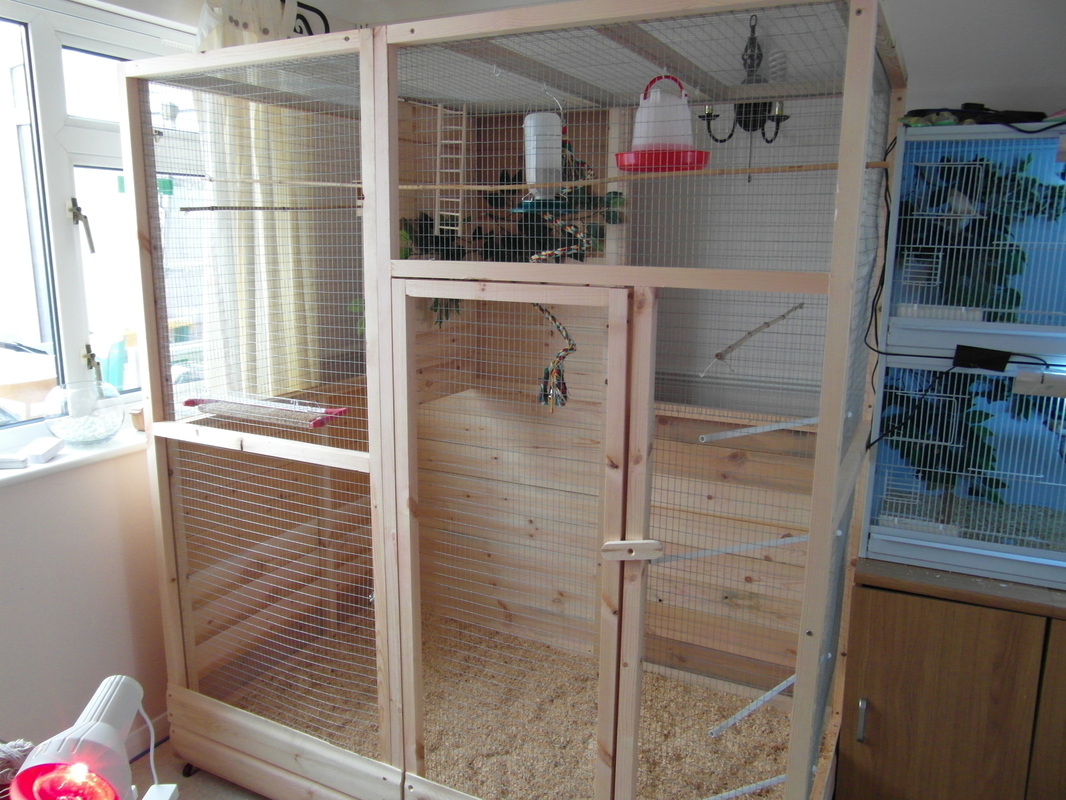
The finch aviary with its perches and feeders

The aviaries long seed trough
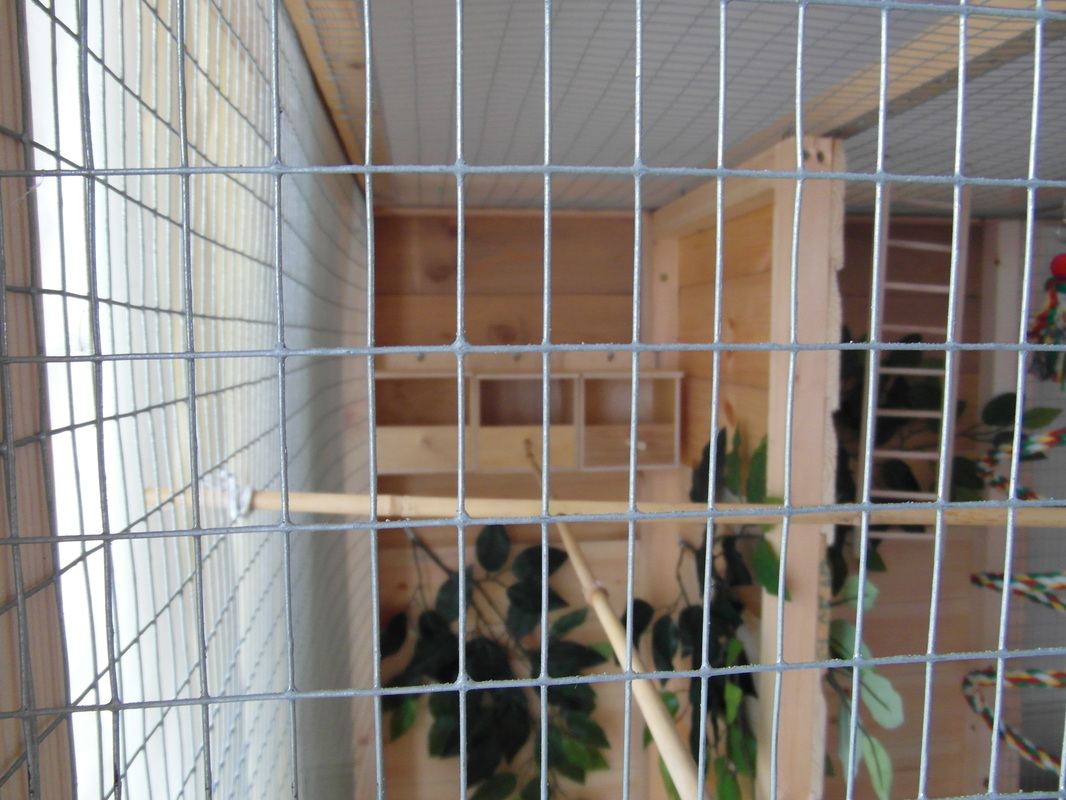
Silk foliage under the finch nest boxes
|
So the aviary turned up earlier this week, and we have been quite busy modifying it for our requirements. To start, we bought a 6' x 3' x 6' aviary which was described as 'executive' high quality. The panels were constructed from 40mm beams of wood (not sawn cut) and uses standard 19 gauge galvanised wire with 0.5" x 1" rectangular hole spacing. Some of the panels have wood slats attached instead of wire and an extra internal mini panel so that a private sleeping zone can be created. Making the Aviary First some of the panels had to be cut down and modified as we wanted the aviary indoors and we had a nice spot at the back of the house as long as it was no longer than 5'6". This was a simple process of disassembling some of the panels, cutting parts down and reassembling them.
The base supplied was a normal wire mesh panel, which was unsuitable for an internal aviary, so we bought a thick pieceof chip board. Though chip board is not good against water, we found it to be sturdier than MDF, and we wanted it to take our weight when we enter to clean the aviary. Support beams were attached to the underside in a figure of 8 (the digital block type), and 8 caster wheels were attached, one in each corner, one in the middle of each long side, and 2 in the middle. The base was then covered in vinyl tiles, as they are scratch and water resistant, and compensate for the chip boards poor water skills.
With the base complete and it easily surviving several weight and impact tests (i.e. us jumping on it!), we were able to attach the panels. Each panel was attached with 2x 5mm thick screws to the base, 2 screws to the roof panel and 4 screws to each of the adjacent panels. Each panel was prepared beforehand, by drilling and countersinking screw holes in appropriate places, and wiping everything with bird safe disinfectant cleaning spray.
5” x 5” x 5” square finch nest boxes were bought and attached into the sleeping zone, and some extra beams added to allow us to add hooks to hang extra features later on. Finally a wooded skirt was added round the bottom of the aviary to make it look better for indoors, but to also hold in any mess the birds make in the bottom (we plan on covering the bottom with bird safe wood chippings).
The aviary itself looks quite different from its intended build,
as we wanted to arrange most the panels in different orientations. Luckily most normal aviaries built from panels only use panels which are 6’ x 3’ and swopping differently designed panels does not impact on the structure or stability of the final product.
Tomorrow we plan on kitting the new aviary out with new perches and feeders, and hopefully the Bengalese Finches can migrate to their new home.
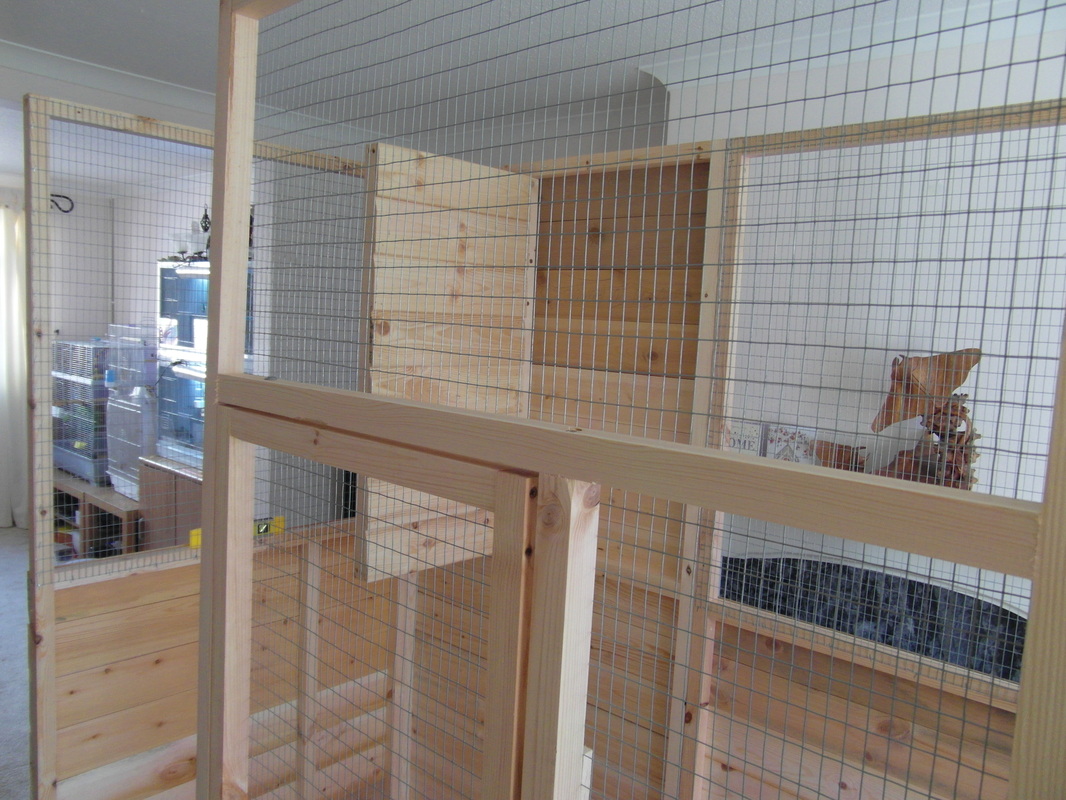 Other side panel and internal mini panel attached 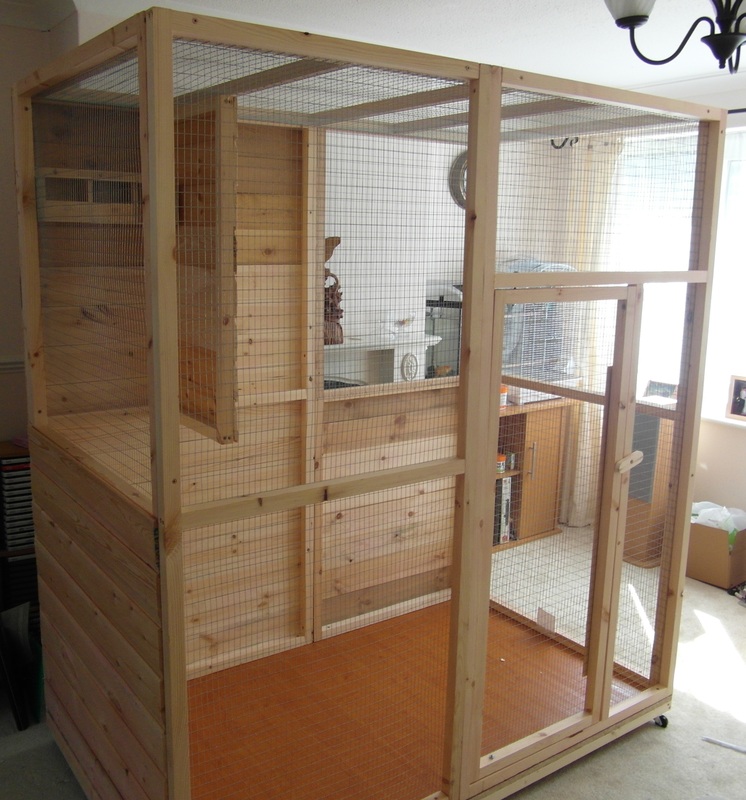 Roof panel attached before final front panel. The Roof panel needed alot of hits from a wooden mallet | 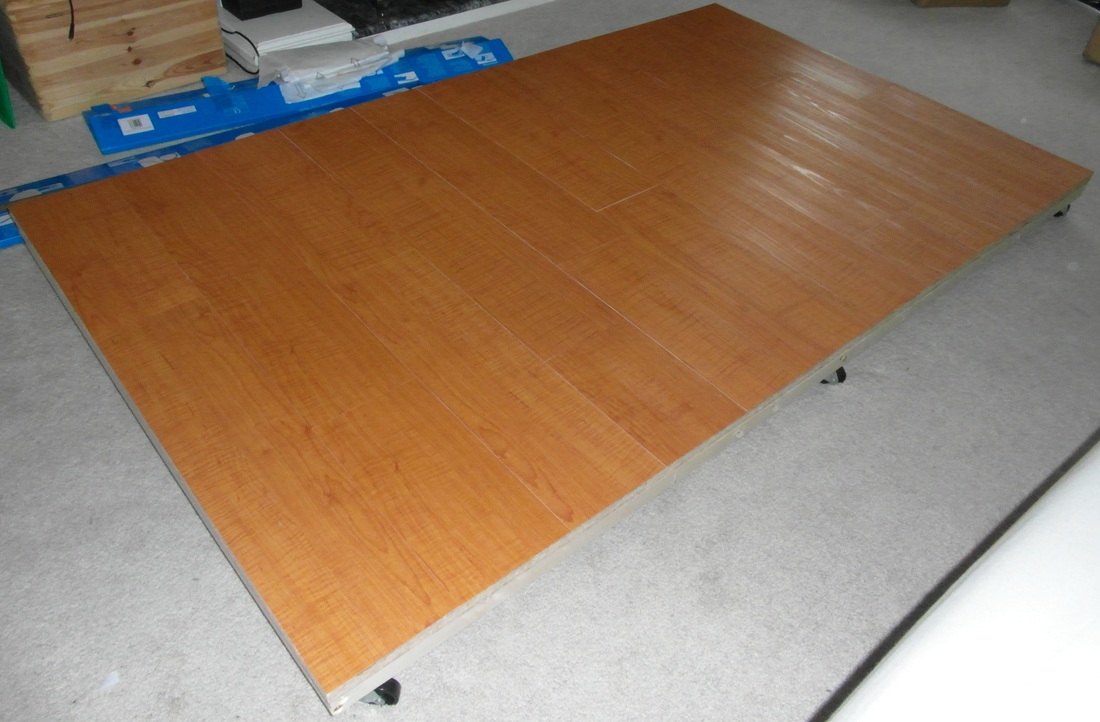 Floor panel, built from scratch 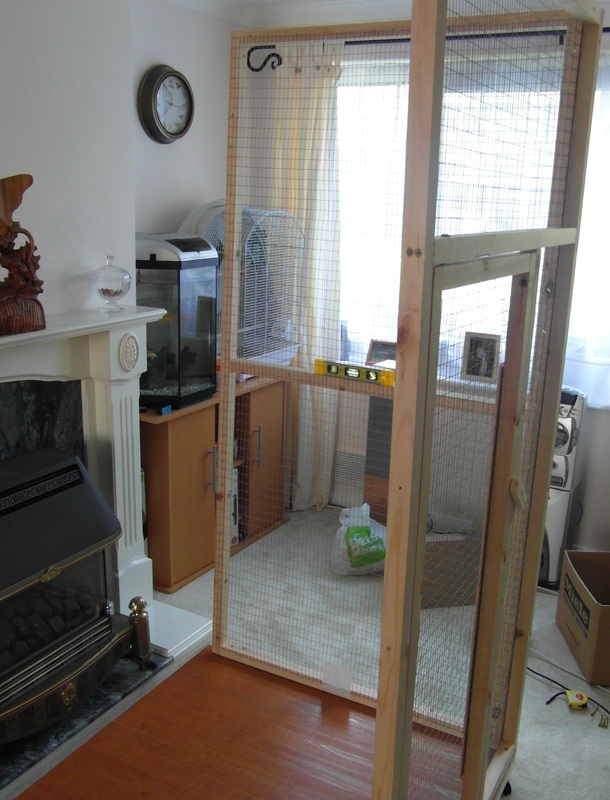 Attaching the door and side panel. Make sure to use a spirit level to check everything is straight! 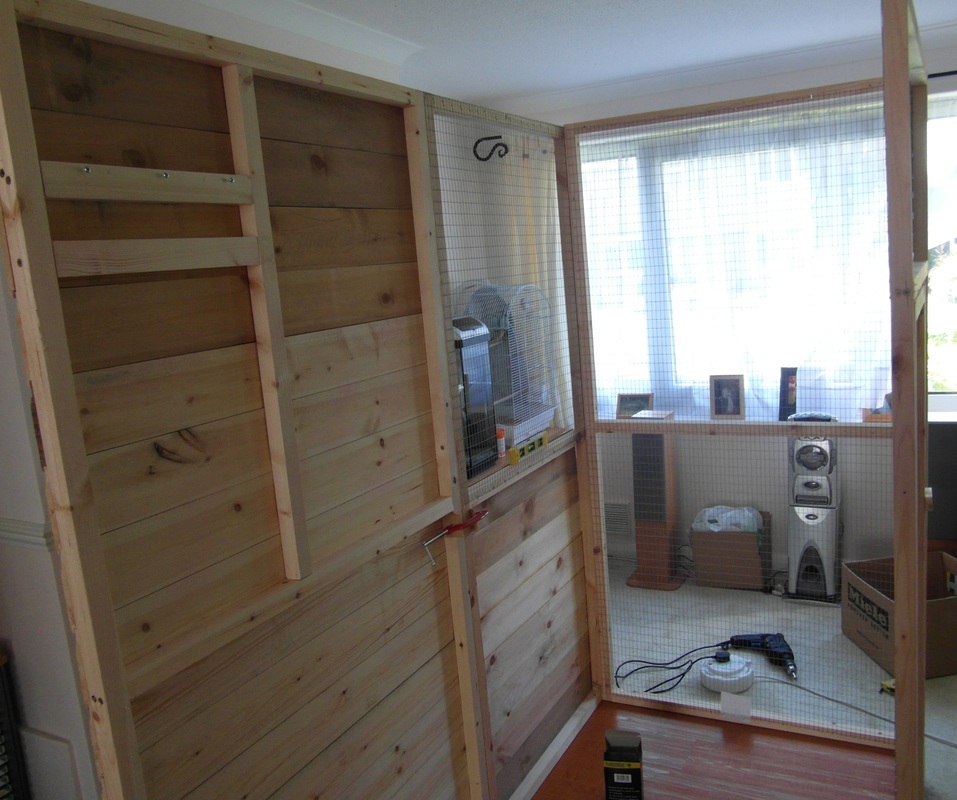 Attaching back panels. Left panel given extra wooden beams to hold finch nest boxes 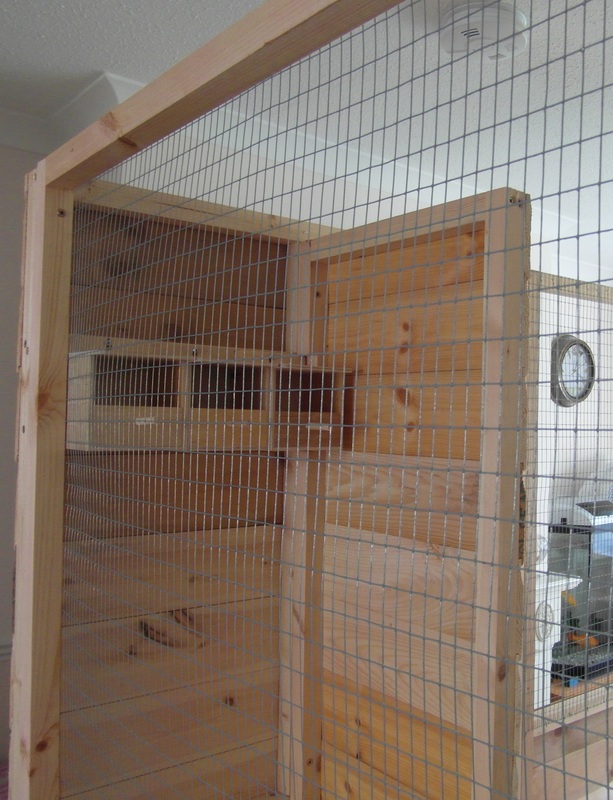 Finch nest boxes attached. They better use them! | 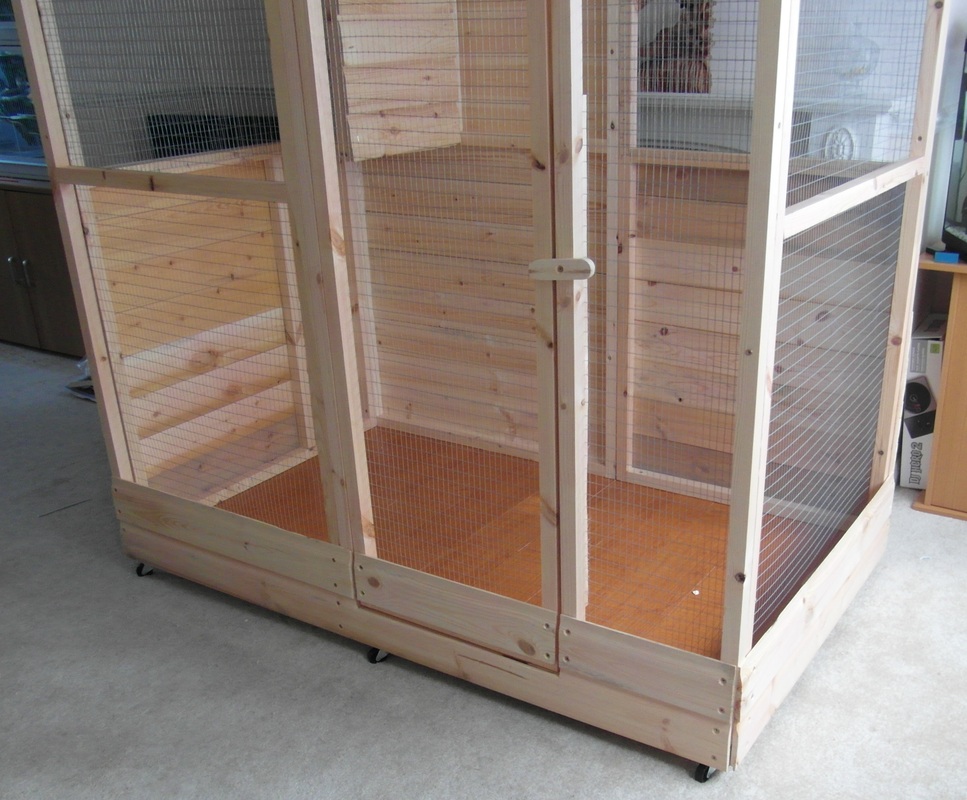 Finally skirt attached. These had to be custom cut due to us re-arranging the aviary panels so that it looked different to how the supplier intended
|
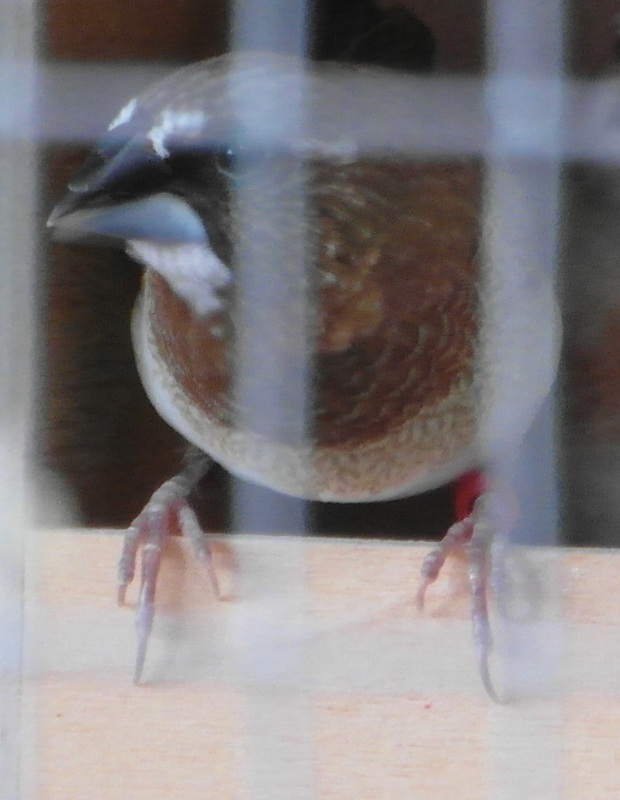
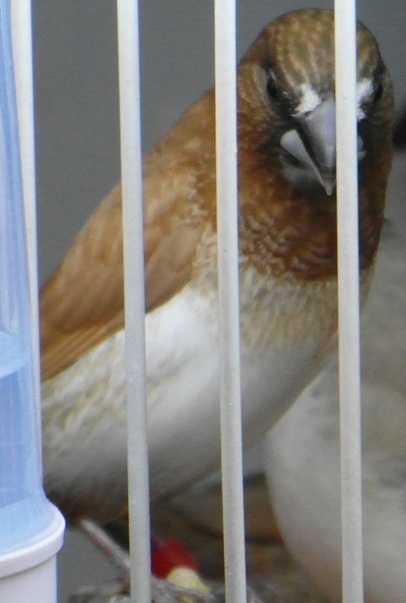

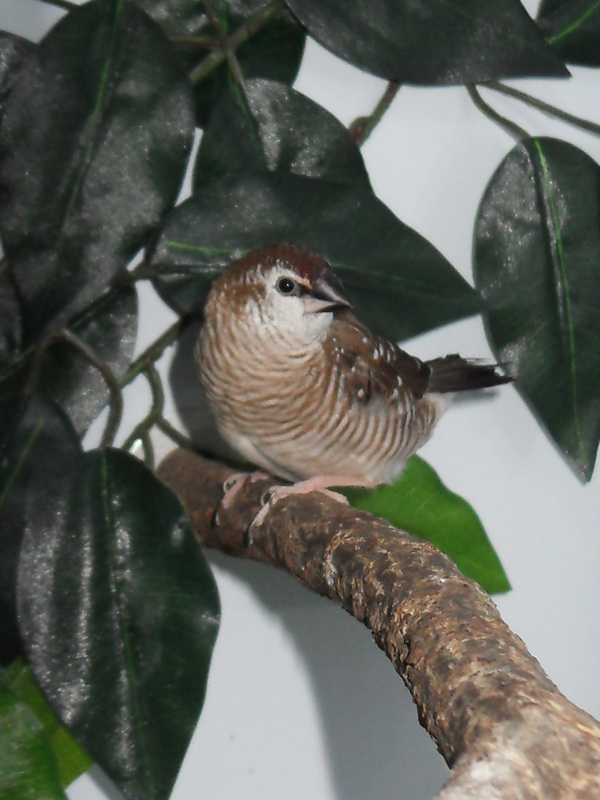


















 RSS Feed
RSS Feed